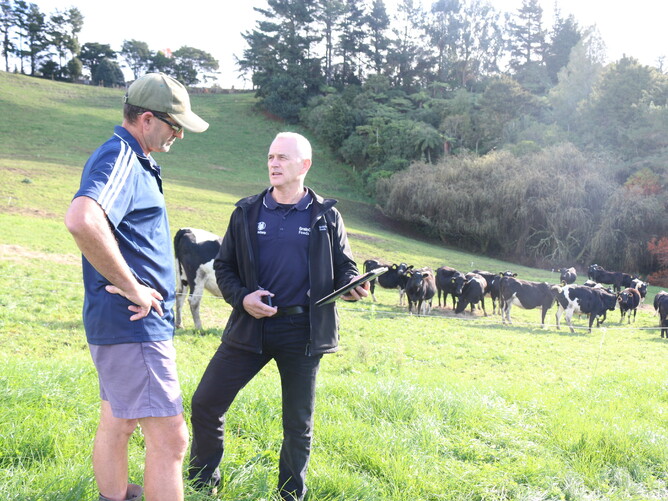Generating and adhering to a daily feeding plan could be the key to getting cows through an expected hot summer.
That’s the message from GrainCorp Feeds technical support manager Ken Winter who says effective nutrition management can be easy and rewarding if dairy farmers focus on a daily plan.
Winter says a focus on nutrition for cows is essential in summer, and a lack of preparation in previous months can impact on the summer period.
“In summer, we find in many cases that the main barriers to getting cows to realise their genetic production potential are underfeeding or poor feed utilisation” he says.
“Often there is a lot of feed in the system, but the hot weather reduces cows’ appetites. Less feed intake means more waste and less production.”
He says another reason for a sharp drop in production over the summer months could because by underperformance in the spring. This has typically been from underfeeding and overgrazing.
This can be avoided with feed planning early in the season, and matching feed intake with desired output.
“Fundamentally, it is important that stocking rates match predicted growth rates, poor performing paddocks are cropped where possible, and that farmers have an ‘insurance policy’ in the form of extra feed on hand to successfully get through the drier months,” he says.
Supplementing with specific nutrients and minerals will depend on the individual herd and farming environment, but Winter believes protecting the liver and immune system throughout the year should be “paramount”.
“Zinc supplemented early enough and long enough can protect stock against facial eczema. Molasses, salt, Levucell SC and quality concentrates will help reduce heat stress while improving dry matter intake and fibre digestion. Products like Melofeed, Selenium and Vitamin E will improve the immune function,” he says.
“The key message is that with a balanced diet, cows will convert feed more efficiently while maintaining production, pregnancy, cow health, body condition, and therefore profitability.”
If heat stress is an issue, making shade available, having a constant supply of good clean water, avoiding milking in the heat of the day, feeding in the cooler parts of the day, and using sprinklers in the shed will all compliment a good nutrition programme and maintain good production in summer.
Leading into autumn the focus should be on cows making a healthy gain in body condition.
“They do this very efficiently while in milk,” Winter says.
Ken’s top nutrition tips for summer
- Have a robust feed plan
“Understand your farm and know how to minimise risk and poor performance.” - Monitor feed conversion efficiency
“Know your margins and what is giving you the best return on your investment. Tracker is a great tool for this.” - Manage nutrition daily
“Good farming comes from a multitude of small things done every day. Each one impacts the next.” - Balance diet
“Grow as much quality grass as possible, harvest any surplus, or crop where needed. Then balance the diet with the right supplement to achieve the best results, rather than relying on supplement alone.”
“A spring-like flush at the end of the year can allow cows to milk well but often they will strip weight in the process. Starch levels generally need to be increased to balance the increased crude protein,” he adds.
Drying off according to the calving date and targeting ‘calving condition’ at dry-off is best practice.
Ken Winter works with dairy farmers throughout the year to look at their current farming practices and pinpoint their herd’s potential through better nutrition and supplementary feed.
He provides farmers with a feed plan based on herd’s individual needs to improve overall productivity and profitability. That’s wrapped around with a hands-on, on-farm service, GrainCorp Feeds’ online milk monitoring and forecasting tool Tracker, and proactive advice on nutrition, feeding and monitoring.
PICTURED ABOVE: Ken Winter (right) shows Te Pahu dairy farmer Shane Swinerd how Tracker can be used to monitor feed efficiency
